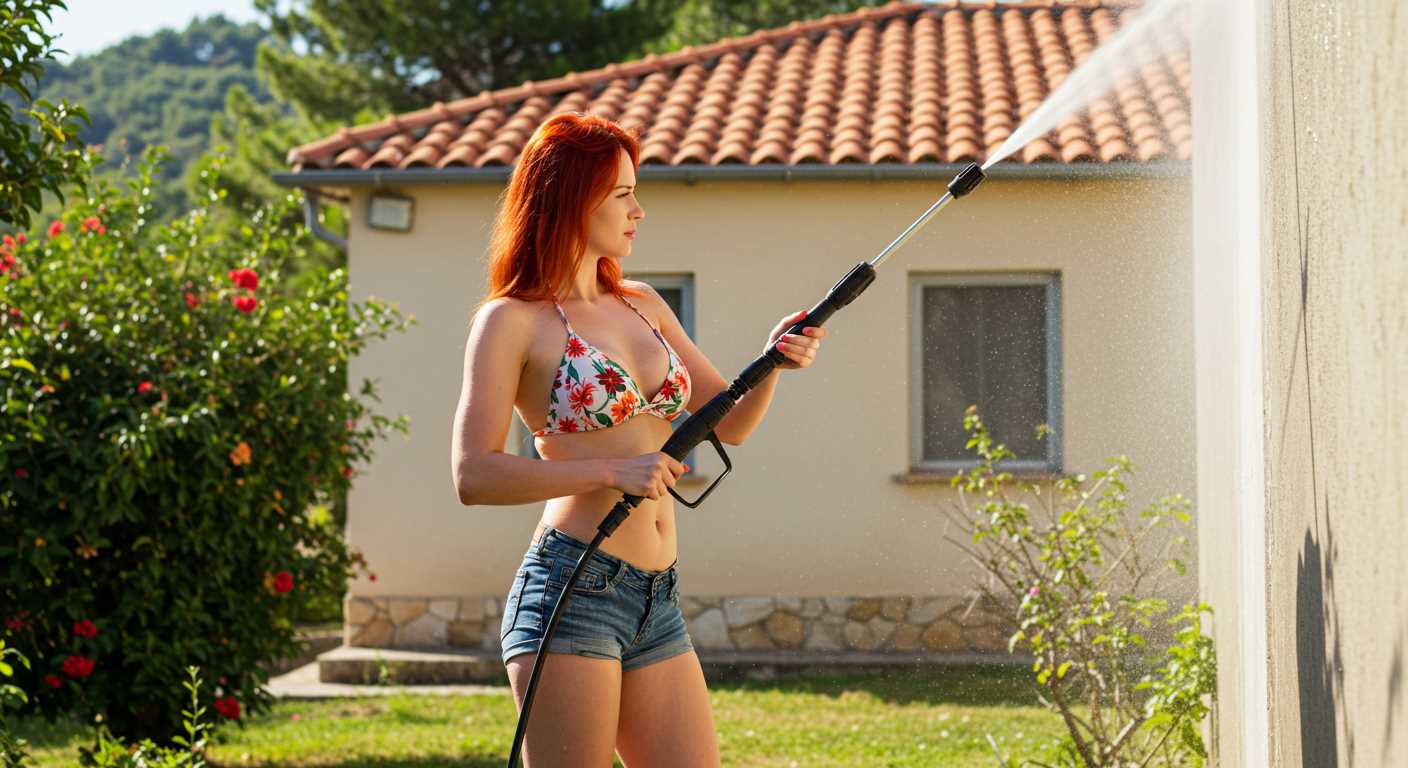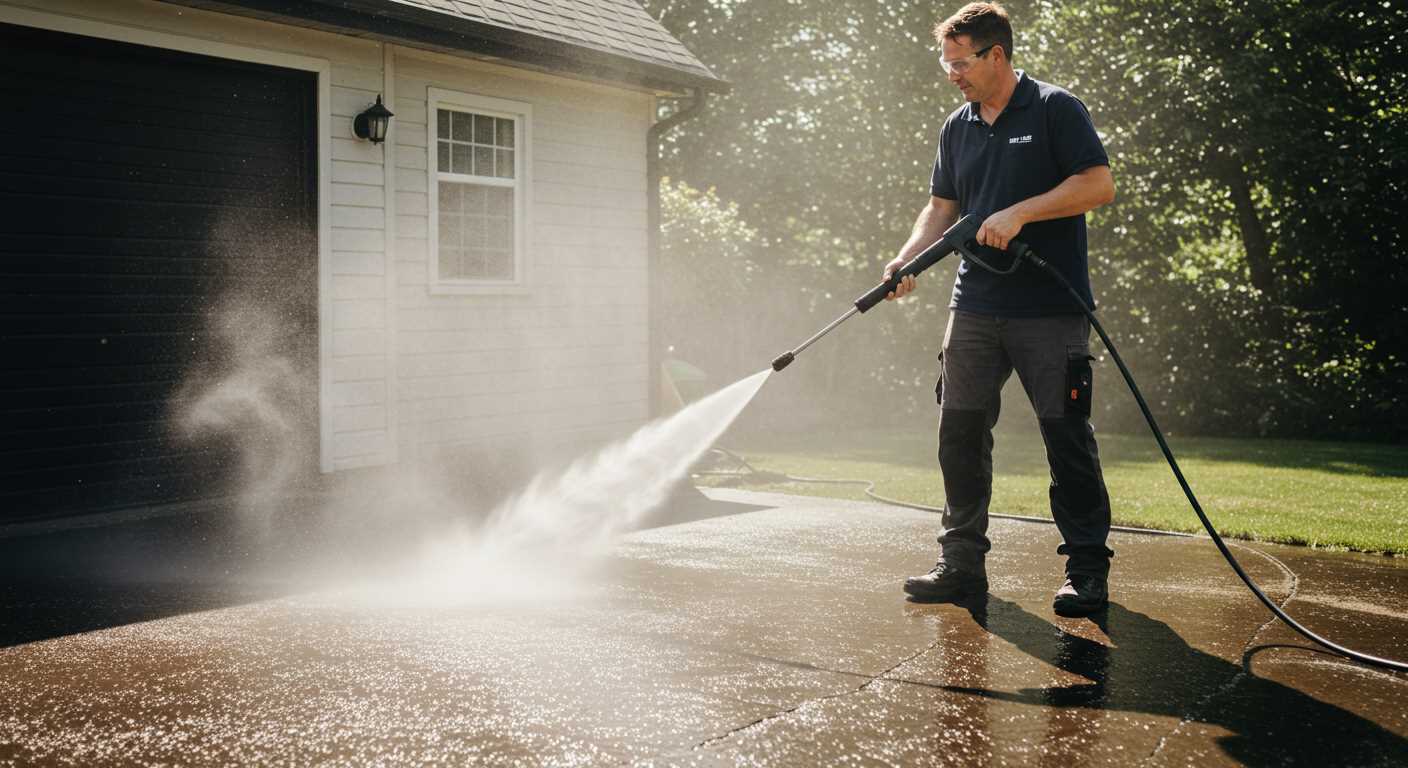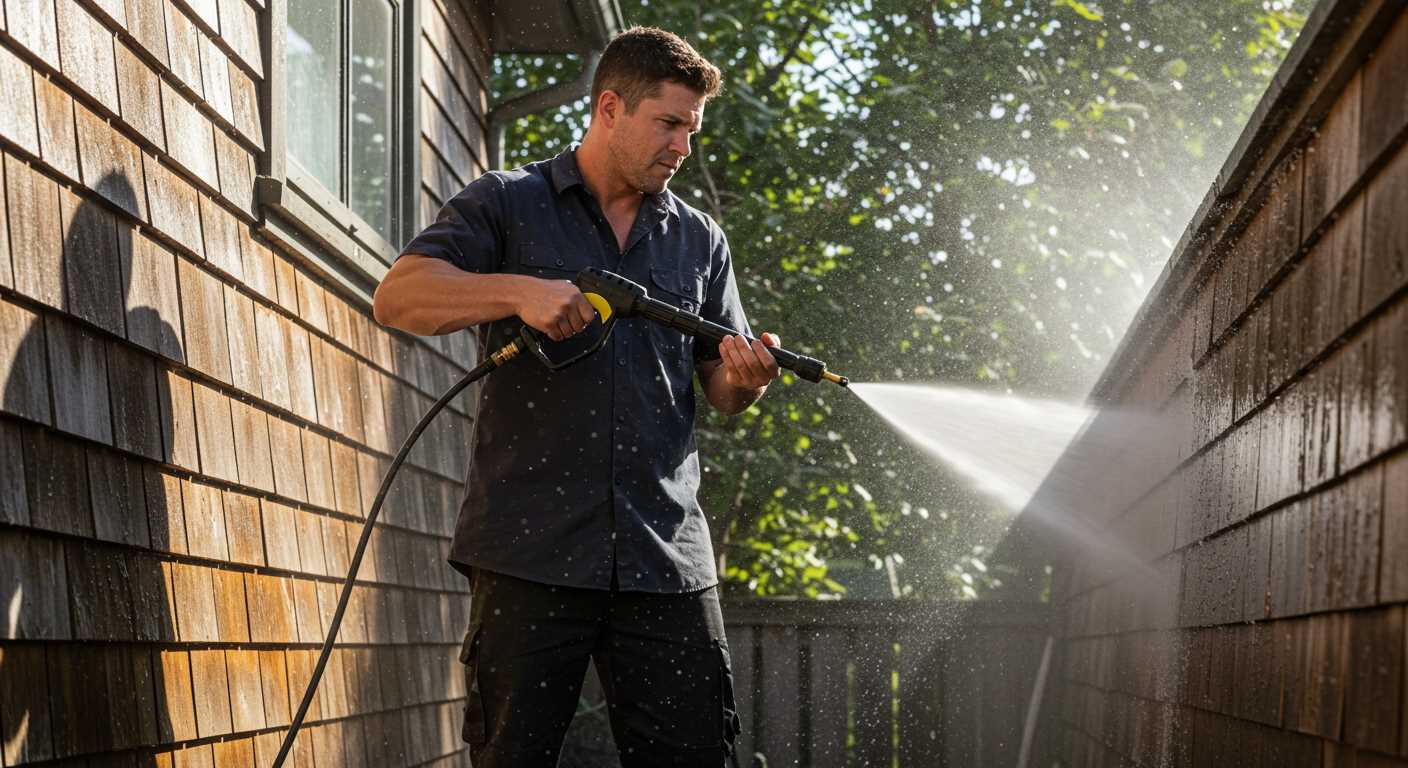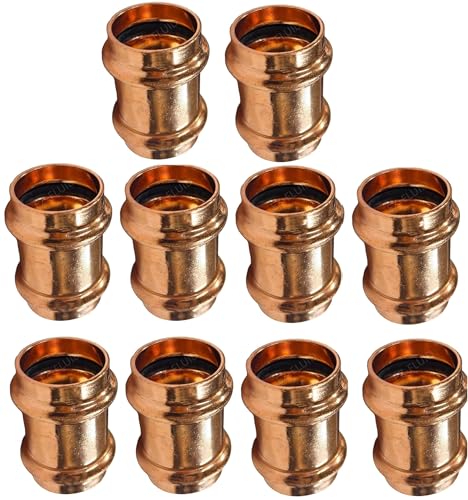



For optimal results on your vehicle, a model with a pressure rating between 1200 and 1900 PSI is highly recommended. This range provides sufficient force to remove dirt and grime without risking damage to delicate surfaces like paint and trim.
Prioritize electric units for home use due to their quieter operation and ease of handling. Look for options featuring adjustable nozzles or rotary tips, as they enable versatility in cleaning and allow you to fine-tune the intensity according to different areas of your vehicle.
Always select a device equipped with an appropriate detergent tank. Utilising a dedicated car cleaning solution enhances effectiveness and can protect the finish of your vehicle. Furthermore, consider models with a foam cannon attachment for even distribution of the cleaning agent, ensuring thorough coverage.
Regular maintenance of your equipment will extend its lifespan and maintain performance. Make it a habit to check for clogs and clean filters to ensure consistent results every time you clean your vehicle.
Choosing the Right Equipment for Automotive Cleaning

For safe and effective cleaning of vehicles, I advise selecting a unit with a pressure rating between 1200 to 1900 PSI. This range offers sufficient force to remove dirt and grime without risking damage to paintwork or sensitive components.
Opt for devices equipped with adjustable nozzles or quick-connect attachments. A 25-degree spray tip is ideal for standard washing, providing a balance between pressure and coverage. For stubborn spots, a 15-degree nozzle can offer a more concentrated stream.
Electric models tend to be quieter and easier to handle, making them suitable for home use. If you’re considering a gasoline-powered alternative, ensure it has a lightweight construction for manoeuvrability.
Look for features like detergent injection systems. These allow for the use of specialised automotive cleaners, enhancing the cleaning process. A foam cannon is also highly beneficial for applying soap evenly, providing superior coverage while reducing the risk of scratches.
Don’t overlook the hose length; a minimum of 20 feet will provide adequate reach without the need to reposition frequently. Consider units with integrated storage for convenience as well.
Lastly, check the manufacturer’s recommendations regarding warranty and maintenance. Quality assurance from the manufacturer can provide peace of mind regarding the longevity of your investment.
Understanding Pressure Washer Ratings for Car Cleaning
For ensuring safe and effective vehicle cleaning, assess the bar rating carefully. A range of 120 to 180 bar is optimal for automotive surfaces, providing adequate force to remove dirt without the risk of damaging paintwork. Exceeding this pressure may lead to unwanted scratches or dents, particularly on delicate finishes.
Flow rate, measured in litres per hour (LPH), also plays a significant role. Aim for a minimum of 300 LPH for thorough rinsing and effective soap application. This will speed up the washing process, making it easier to achieve a clean vehicle without wasting water.
Always choose models featuring adjustable nozzles. This versatility allows for altering spray patterns, adapting to different cleaning needs around the vehicle. A wide spray angle is ideal for rinsing, while a narrower jet is more effective for targeted dirt removal.
Thermal aspects matter too; selecting a model with a built-in heater can enhance cleaning results, particularly for oily or greasy residues. Hot water provides a better breakdown of grime, making the overall process smoother.
Don’t overlook the importance of accessories. A foam cannon can significantly enhance the pre-wash process, allowing detergent to cling to surfaces longer and penetrate stubborn dirt more effectively. Ensure compatibility with the chosen unit.
Lastly, consider the build quality and warranty. Investing in a robust, reliable machine backed by a strong warranty can alleviate concerns about longevity and performance. Quality construction guarantees that the equipment will withstand frequent use and varied conditions.
Recommended Pressure Washer PSI for Different Car Finishes

For optimal cleaning results, adhere to the following PSI guidelines based on car finishes:
| Car Finish Type | Recommended PSI Range |
|---|---|
| Clear Coat Paint | 1200 – 1900 PSI |
| Matte Paint | 1000 – 1500 PSI |
| Waxed Finish | 1300 – 2000 PSI |
| Vinyl Wrap | 1000 – 1500 PSI |
| Classic Finish (Single Stage) | 800 – 1200 PSI |
| Plastic Trim | 1000 – 1500 PSI |
Using a higher PSI than recommended might damage delicate finishes. For thorough cleaning, adjust the nozzle to a fan spray pattern at a safe distance, usually around 2-3 feet from the surface. This technique will help maintain the integrity of the paint while ensuring effective dirt removal.
Choosing the Right Nozzle for Car Washing
The best choice for cleaning automobiles involves using a fan nozzle with a wide spray pattern. Typically, a 25-degree or 40-degree nozzle works effectively for this purpose. The wider angle reduces the risk of damaging the vehicle’s paint while still delivering sufficient force to dislodge dirt and grime.
Opt for a rotating nozzle if stubborn stains or mud are present. This nozzle type provides a concentrated spray that effectively tackles tough debris without needing excessive pressure. However, maintain a safe distance to prevent potential damage to finishes.
For delicate surfaces, such as plastics or glass, a low-pressure soap nozzle is ideal. This attachment allows for even distribution of cleaning solutions without the risk of creating scratches or chips. It’s perfect for applying car shampoos or waxes before rinsing.
Experimenting with various attachments can enhance the cleaning experience. While the general recommendations apply, keep in mind that every vehicle may respond differently based on its finish and condition. Always start with the gentlest option and adjust as needed.
A quick rinse before using any nozzle will help loosen debris and reduce scrubbing time. This approach not only enhances cleaning efficiency but also prolongs the life of your vehicle’s exterior.
Safety Tips When Using a Pressure Washer on Your Vehicle
Always maintain a safe distance of at least 3 feet from your vehicle’s surface to avoid damaging the paintwork. High-powered jets can strip away clear coats and finish.
- Wear protective eyewear to shield against debris and water that can bounce back during cleaning.
- Use non-slip footwear to prevent accidents on wet surfaces.
- Ensure proper grounding by using a GFCI (Ground Fault Circuit Interrupter) outlet to reduce the risk of electric shock.
- Inspect hoses and connections for leaks or wear before starting the equipment.
- Begin with a lower intensity setting before adjusting to higher levels, allowing you to gauge effectiveness without risking damage.
Check the vehicle’s manual for any areas that should not be cleaned this way, such as sensitive electronic components. Avoid spraying directly into engine compartments and undercarriage areas.
- Do not aim the stream at people, animals, or fragile items; keep a safe zone.
- Rinse off any soap or cleaning agents thoroughly to prevent residues from damaging paint.
- After cleaning, allow time for the vehicle to dry completely to avoid water spots.
Following these guidelines will help preserve your vehicle’s appearance while ensuring your safety during the cleaning process.
Maintaining Your Pressure Washer for Optimal Vehicle Cleaning

Regular upkeep of your cleaning device ensures consistent performance and prolongs its lifespan. Here are key steps to follow:
Routine Maintenance Steps
- Check and clean the filter regularly to prevent blockages and maintain water flow.
- Inspect hoses and connections for leaks or wear; replace any damaged parts.
- Address any build-up of dirt or grime on the device to maintain efficiency.
- Ensure the nozzle is clear; a blocked nozzle can alter spray patterns.
Seasonal Checks

- Before and after each season, inspect all components. Look out for cracks or signs of wear.
- Drain any remaining water from the system to prevent freezing during colder months.
- Lubricate moving parts to ensure smooth operation.
Adhering to these practices will not only enhance your cleaning sessions but also ensure your equipment remains efficient for years to come. Well-maintained devices deliver optimal results while protecting the surfaces you clean.
Common Mistakes to Avoid When Pressure Washing a Car

Avoid using high settings on devices meant for tougher surfaces. Selecting an excessive PSI can damage paint and finish. Stick to a maximum of 1500-1900 PSI for most vehicles.
Neglecting to test a small area can lead to unexpected results. Always start with an inconspicuous section to ensure the desired effect before moving to larger areas.
Inadequate Distance from the Surface
Maintain a safe distance of at least 2 feet from the vehicle’s surface. Working too closely can lead to paint chips or scratches, creating a need for repainting and repairs.
Using the Wrong Nozzle
The choice of nozzle is critical. A narrow spray can create excessive force, while a wide one may not clean effectively. Opt for a 25-degree or 40-degree nozzle for general cleaning to strike a balance between pressure and coverage.
FAQ:
Can I use a pressure washer to clean my car?
Yes, you can use a pressure washer to clean your car, but it’s important to choose the right pressure settings and nozzle. A low-pressure setting is recommended, typically around 1200 to 1900 PSI, to avoid damaging the car’s paintwork and components. It’s advisable to use a fan-shaped nozzle rather than a direct spray to distribute the water more gently across the surface.
What type of pressure washer is best for washing cars?
The best type of pressure washer for washing cars is an electric model with adjustable pressure. Electric pressure washers usually operate at lower PSI levels, which is safer for vehicles. Make sure it has detachable nozzles, including a soap nozzle for applying cleaning solutions. Brands like Karcher or Ryobi offer several suitable options that balance power and care for your car’s finish.
Are there any precautions I should take when using a pressure washer on my car?
Absolutely, there are several precautions to consider. Firstly, make sure to keep the nozzle at least a foot away from the paint surface to prevent damage. Avoid spraying directly at any sensitive areas such as the engine, electrical components, and windows. It’s also advisable to start with a pre-rinse using a low-pressure setting and to use specific car wash soap to maintain your paint’s integrity. Always wash your car in a shaded area to prevent soap from drying too quickly.
Can using the wrong pressure washer damage my car?
Yes, using the wrong pressure washer can indeed cause damage to your car. High-pressure settings can strip the paint, damage seals, or even force water into sensitive areas of the vehicle. It’s crucial to select a model that offers adjustable pressure and to set it appropriately. Following the manufacturer’s instructions and using the right nozzles can significantly reduce the risk of harmful effects on your vehicle’s finish and structure.









